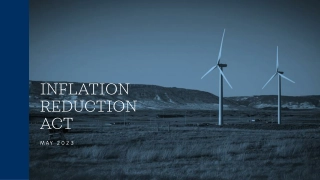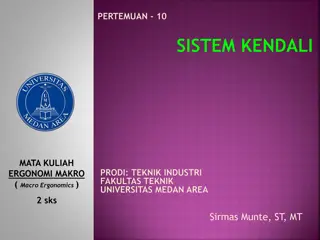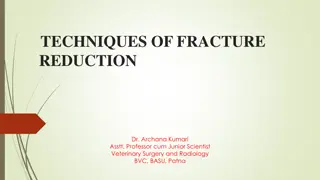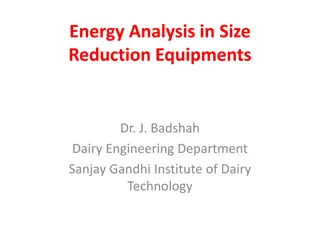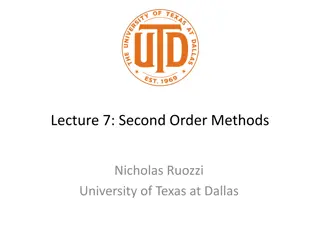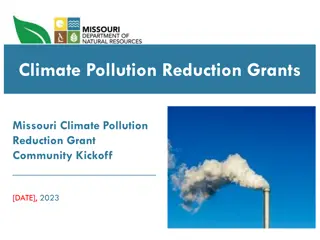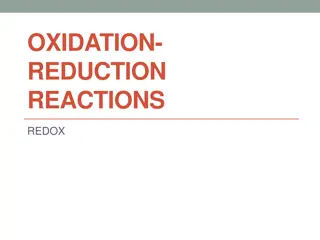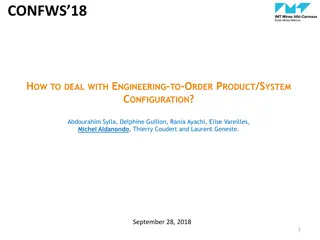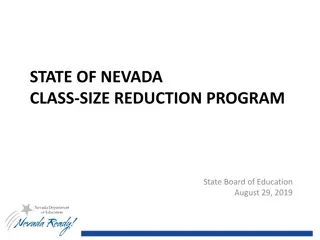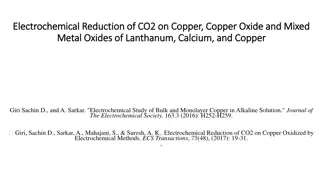
Approximation Methods for Higher-Order Transfer Functions in Control Systems
Learn about approximation methods for higher-order transfer functions in control systems, including first-order plus time delay (FOPTD) and second-order plus time delay (SOPTD) models. Discover techniques such as Taylor series expansion, pad approximations, and Skogestad's half rule for simplifying complex models for analysis and control purposes.
Download Presentation

Please find below an Image/Link to download the presentation.
The content on the website is provided AS IS for your information and personal use only. It may not be sold, licensed, or shared on other websites without obtaining consent from the author. If you encounter any issues during the download, it is possible that the publisher has removed the file from their server.
You are allowed to download the files provided on this website for personal or commercial use, subject to the condition that they are used lawfully. All files are the property of their respective owners.
The content on the website is provided AS IS for your information and personal use only. It may not be sold, licensed, or shared on other websites without obtaining consent from the author.
E N D
Presentation Transcript
- System Dynamics and Control Process 3130 (8) Dr. Enas Ismail E-mail: enas.ismail@mu.edu.eg - 2020
Approximation of Higher-Order Transfer Functions Into: 1- First order plus time delay (FOPTD). 2- Second order plus time delay (SOPTD).
e s : Polynomial Approximations to For purposes of analysis using analytical solutions to transfer functions, polynomial approximations for are commonly used. Example: simulation software such as MATLAB and MatrixX. e s Chapter 6 Two widely used approximations are: 1. Taylor Series Expansion: 2 2 s 3 3 s 4 4 s s 1 = + + + e s (6-34) 2! 3! 4! The approximation is obtained by truncating after only a few terms. 4
2. Pad Approximations: Many are available. For example, the 1/1 approximation is, 2 2 1 s s (6-35) e + 1 s Chapter 6 Implications for Control: Time delays are very bad for control because they involve a delay of information. 5
Approximation of Higher-Order Transfer Functions In this section, we present a general approach for approximating high-order transfer function models with lower-order models that have similar dynamic and steady-state characteristics. Chapter 6 In Eq. 6-4 we showed that the transfer function for a time delay can be expressed as a Taylor series expansion. For small values of s, 0 s 1 e s (6-57) 0 6
An alternative first-order approximation consists of the transfer function, 1 1 s = (6-58) e 0 s 1 + s Chapter 6 e 0 0 . where the time constant has a value of 0 Equations 6-57 and 6-58 were derived to approximate time- delay terms. However, these expressions can also be used to approximate the pole or zero term on the right-hand side of the equation by the time-delay term on the left side. 7
Skogestadshalf rule Skogestad (2002) has proposed a related approximation method for higher-order models that contain multiple time constants. He approximates the largest neglected time constant in the following manner. Chapter 6 One half of its value is added to the existing time delay (if any) and the other half is added to the smallest retained time constant. Time constants that are smaller than the largest neglected time constant are approximated as time delays using (6-58). 8
Example 6.4 Consider a transfer function: ( ) + 0.1 s + 1 K s ( ) = (6-59) G s ( )( )( ) + + 5 1 3 1 0.5 1 s s Chapter 6 Derive an approximate first-order-plus-time-delay model, s Ke ( ) = (6-60) G s + s 1 using two methods: (a) The Taylor series expansions of Eqs. 6-57 and 6-58. (b) Skogestad s half rule Compare the normalized responses of G(s) and the approximate models for a unit step input. 9
Solution (a) The dominant time constant (5) is retained. Applying the approximations in (6-57) and (6-58) gives: e 0.1 s 0.1 + 1 (6-61) s Chapter 6 and 1 1 s 0.5 3 s s (6-62) e e + + 3 1 0.5 1 s Substitution into (6-59) gives the Taylor series approximation, ( ): TS G s 0.1 0.5 3.6 3 s s s s Ke e s e Ke ( ) s = = (6-63) G TS + + 5 1 5 1 s 10
(b) To use Skogestads method, we note that the largest neglected time constant in (6-59) has a value of three. According to his half rule , half of this value is added to the next largest time constant to generate a new time constant The other half provides a new time delay of 0.5(3) = 1.5. The approximation of the RHP zero in (6-61) provides an additional time delay of 0.1. Approximating the smallest time constant of 0.5 in (6-59) by (6-58) produces an additional time delay of 0.5. Thus the total time delay in (6-60) is, 5 0.5(3) = + = 6.5. Chapter 6 = 1.5 0.1 0.5 + + = 2.1 11
and G(s) can be approximated as: 2.1 s Ke ( ) s = (6-64) G Sk + 6.5 1 s The normalized step responses for G(s) and the two approximate models are shown in Fig. 6.10. Skogestad s method provides better agreement with the actual response. Chapter 6 Figure 6.10 Comparison of the actual and approximate models for Example 6.4. 12
Approximation of Higher-Order Transfer Functions Into: 1- First order plus time delay(FOPTD). 2- Second order plus time delay (SOPTD).
Approximation of Higher-Order Systems 1. Into FOPTD or SOPTD 2. Fast dynamics (Rule of thumb) 3. Pole-Zero Cancellation 4. Linearization.

